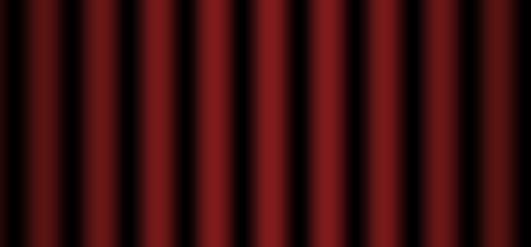Working Content > The wave model > Huygens' principle and the wave model
Prerequisites:
We have analyzed what happens when waves from two point sources combine. At different points in space the result may be a strengthening of what each source would do by itself (constructive interference) or a weakening of what each source would do by itself (destructive interference), depending on whether the two waves are in phase with each other or out of phase with each other (Two-slit interference). We've also considered what happens if a single slit is wide enough that the interference from different parts of the slit have to be taken into account (Diffraction). This is what the set-ups and patterns look like in the two cases:
|


Interference from two narrow slits
|


Diffraction from one (wider) slit
|
Now our question is: What happens if we have two slits that are each wide enough so that the width of the slit has to be taken into account?
If you think of what is happening physically in term of wavelets from the sources at the slits, it is fairly straightforward to see what's happening. If we are at a particular position, y, on the screen up (if positive) or down (if negative) from the center line, we receive oscillating signals from each of the slits. These signals are the result of all the wavelets coming out of that slit adding together. Now we have to add those two results together -- with an additional phase shift as a result of the extra path difference between the two slits. This will produce the interference pattern on the left (the two-slit pattern) multiplied by the pattern on the right (the one-slit pattern). We are getting interference of the waves from the two slits, but the waves from each of the slits have a non-uniform strength as y changes due to the one-slit pattern.
In particular, at that position on the screen where the one slit pattern cancels (the "squash point") then the total interference pattern goes to zero there as well. You are interference waves from two slits, but waves of 0 intensity -- so the total result is zero. The regular fringes produced by the two-slit pattern are "squashed" by the one slit pattern. The result looks like this:

The top shows the graph of the total intensity (in red) "squashed" by the one-slit diffraction pattern (in blue). Below that is shown what the pattern actually would look like on the screen, and below that a schematic of the laser beam approaching the slits.
A natural question to ask at this point is: Suppose the squash point from one-slit diffraction is closer to the center than the first peak away from the center from two-slit interference? Let's look at the equations for the y of the squash point and the first peak:
yfirst peak = λ (L/a ) ysquash point = λ (L/d ).
(The y of the squash point really has a λ/2 and a d/2 but the two factors of 1/2 cancel.) For the position of the first peak to be greater than the position of the squash point, yfirst peak > ysquash point,we have to have 1/a > 1/d since L and lambda are the same for both. This means that d, the width of the slit, has to be greater than the separation of the two slits (measured from center to center). Is this possible? If you think so, pick some numbers and try drawing the slits.
Notice the interesting fact that both the separation between the slits and the width of the slits get "turned inside out" when they get to the screen. Making the slits narrower widens the squash pattern and making the slits farther apart pushes the interference fringes closer together.
 Workout: Interference from two wide slits
Workout: Interference from two wide slits
Joe Redish 4/28/12
Comments (0)
You don't have permission to comment on this page.